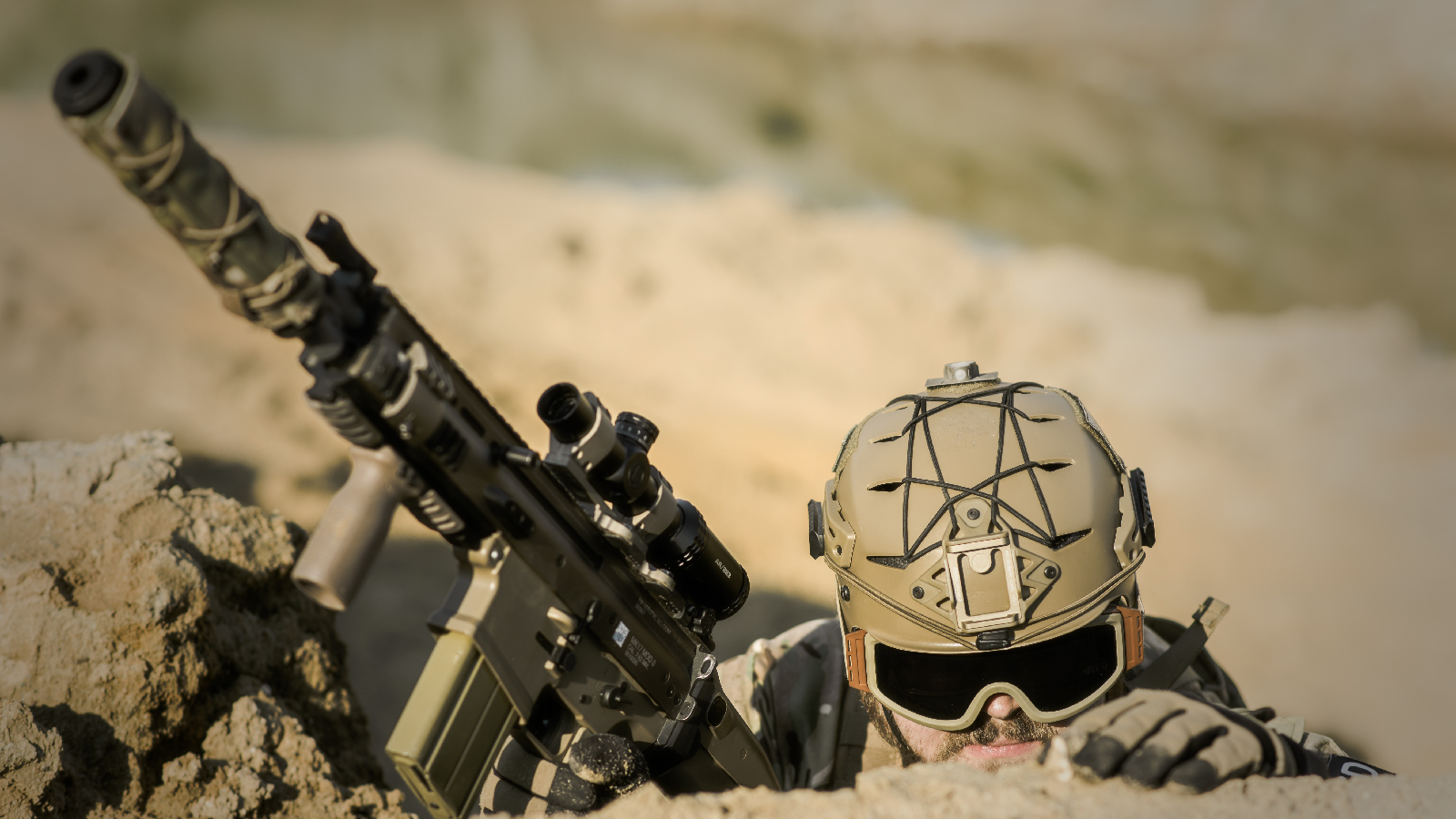Depending on who you ask, creating a new Space Force as a separate military branch is either just the thing to do or an ill-conceived and unnecessary waste of time and money.
Since President Donald Trump has pointedly ordered the creation of a Space Force, which would presumably have responsibility for all military matters above earth's atmosphere, a debate has been raging over whether that's such a good idea. But it's not the first time a new technology or battlespace has run smack dab into entrenched military bureaucracy. The result is usually not pretty.
Currently the U.S. Air Force's Space Command has responsibility for the heavens and is loathe to give up this future war-fighting domain. (And it is a future war-fighting domain, according to national security officials. For more on that, click the link below.)
Read: What the Coming Space Conflict Will Really Look Like (RealClearLife)
Former Air Force Secretary Deborah Lee James told The Cipher Brief in an interview posted online today that a new Space Force won't solve any problems when it comes to funding or to acquisition troubles, and then made a colorful argument against reorganization.
"The final point I will make is that you can reorganize the entire DOD [Department of Defense] a thousand different ways. How about we create a separate Submarine Force? Because how can the Navy concentrate on ships, aircraft and submarines? How about a Nuclear force that is separate, given the relative priority of nuclear in our country?" she said. "We can take the Air Force nuclear, and the Navy nuclear away and create our own service. You can go on and on with this. So I come back to the point on Space Force, is the juice worth the squeeze? For the amount of money we will throw at this, is it really worth it? Is it going to solve your problems? I say no."
Notably, the current secretary of defense, James Mattis, told lawmakers in a letter last year that he opposed the creation of a new Space Force and the "additional organizational layers" it would create "at a time when we are focused on reducing overhead and integrating joint warfighting functions." [PDF]
Others, like Rep. Jim Cooper (D-Tenn.), recently said that the Air Force has already botched its handling of the stars and a new force was needed to correct those errors.
"We have squandered our advantage in space; the Air Force went for a decade with no defense systems for satellites, after the military threat to them was clear," Cooper said, according to a recent David Ignatius column in The Washington Post.
The problem of how to deal with the emergence and presumed domination of a new battlespace or technology has tripped up the military many times in the past, leading to lengthy and sometimes embarrassing turf battles.
Perhaps the most significant in recent history was when, like space, a new arena of warfare had to be fitted into old battle plans: the skies.
As the Air Force's official history puts it, "For centuries, war was reserved for the battlefields and the high seas. But when the war to end all wars broke out in Europe on July 28, 1914, the once-peaceful skies would quickly know the ravages of manned conflict."
At the time, aerial balloons and some biplanes were generally used for reconnaissance, but eventually progressed to rudimentary dog-fighting and air-to-ground "bombings" that consisted of dropping hand grenades from open cockpits.
During the Second World War, nearly 30 years later, air operations were far more robust, involving high-speed fighter aircraft and heavy bombers. But America's air operations remained under the U.S. Army's purview, in the Army Air Corps. "When created, several other nations had already adopted independent air forces but the United States made the decision to leave aviators as part of the Army," the Army website says.
It wasn't until after the war was over that the U.S. realized the need to create a separate air force, as new technology opened up the skies to all manner of new aircraft, tactics and strategies.
The Ignatius column notes that a few years later, in the 1950s, the Army tried to argue that the emerging missile technology was a form of artillery over which they should have control. The relatively new Air Force said it was clearly part of the "aeronautical domain," as Ignatius put it. After a turf battle, the Air Force mostly won out.
Around the same time, the Army's fear of being left behind was taken to an almost comical extreme when it developed nuclear landmines for use in Europe in a potential war against the Soviet Union.
Stephen Schwartz, editor and co-author of "Atomic Audit: The Costs and Consequences of U.S. Nuclear Weapons Since 1940," told Code and Dagger in October, "There were two arms races during the Cold War. There was the one we all know about, which was the United States vs. the Soviet Union. But then the lesser known one, what drove a lot of procurement decisions, and that was the inter-service rivalry between the Air Force, the Navy and the Army. And the Army in particular was scrambling... All this money, all this prestige was attached to this new weaponry and the Army needed a mission. So what did they do? They created requirements for a nuclear weapon."
Most recently, the U.S. military took years to figure out the importance of cyberspace. Coincidentally, cyber operations were first the responsibility of U.S. Space Command in 2000, but it wasn't until 2009 that U.S. Cyber Command was created as a "sub-unified command" under U.S. Strategic Command.
Just last month the U.S. military signaled the growing importance of cyber operations when it declared U.S. Cyber Command a full Combatant Command, like Pacific Command or European Command.
It remains to be seen if and how a separate U.S. Space Command branch of the military could come about, regardless of Trump's public statements. What seems to be clear, both from public statements from officials and from history, is that it won't be an easy process.
[Like what you see and read on Code and Dagger? Become a Patreon and help keep the lights on. Do you have a tip or question? Reach out at CodeAndDagger@protonmail.com.]











